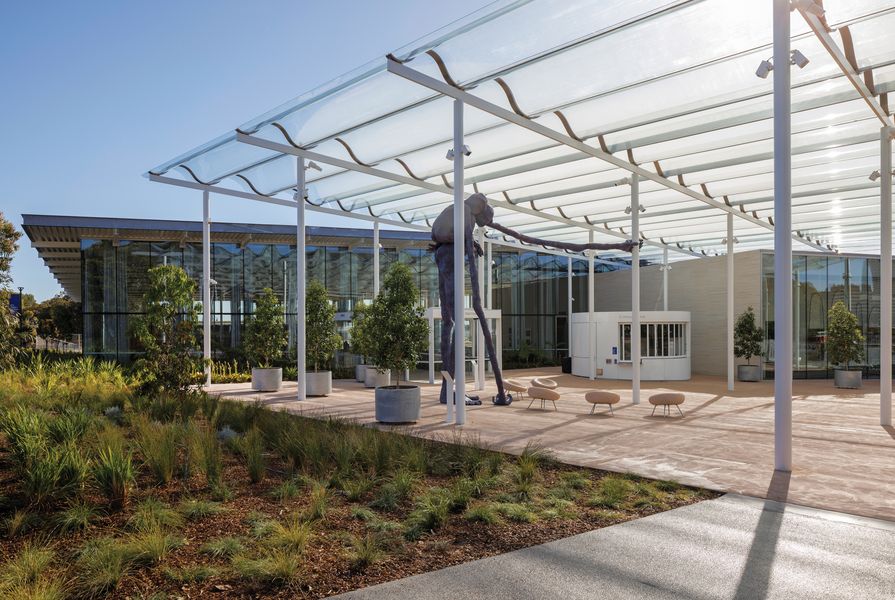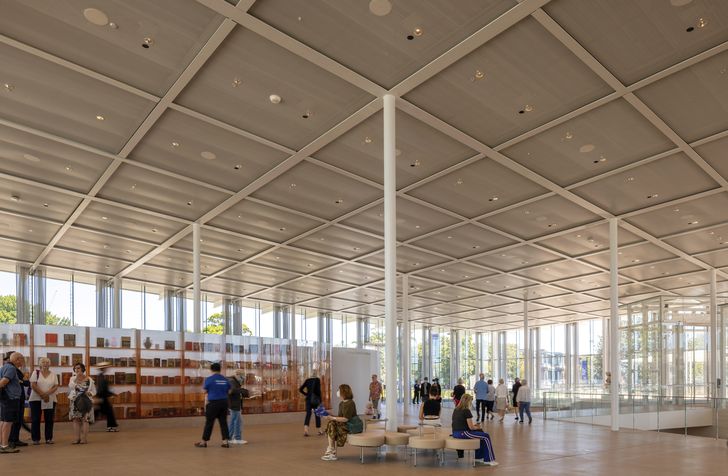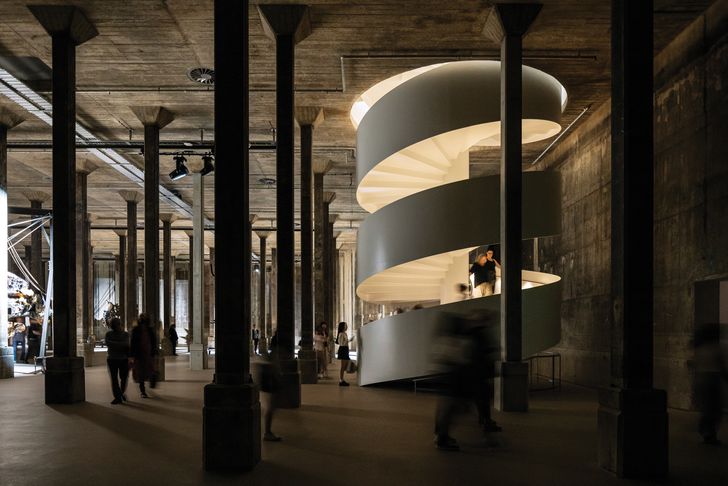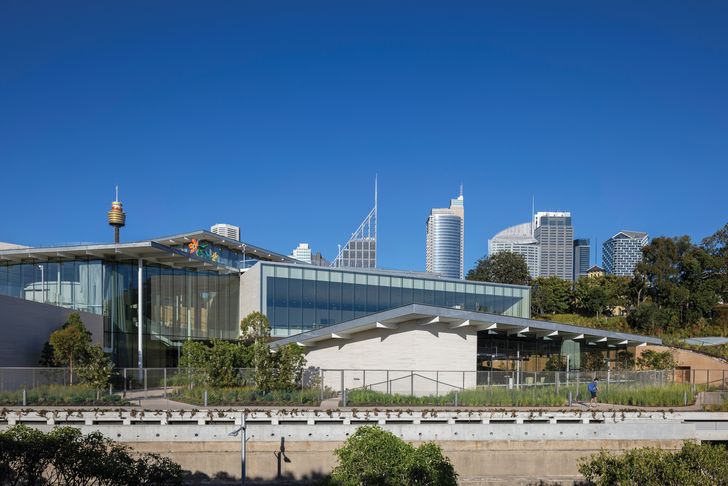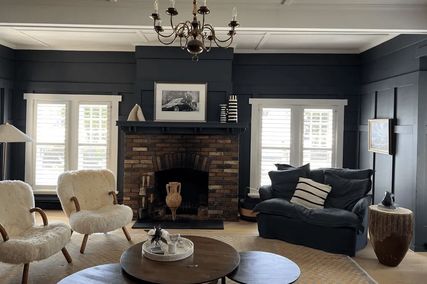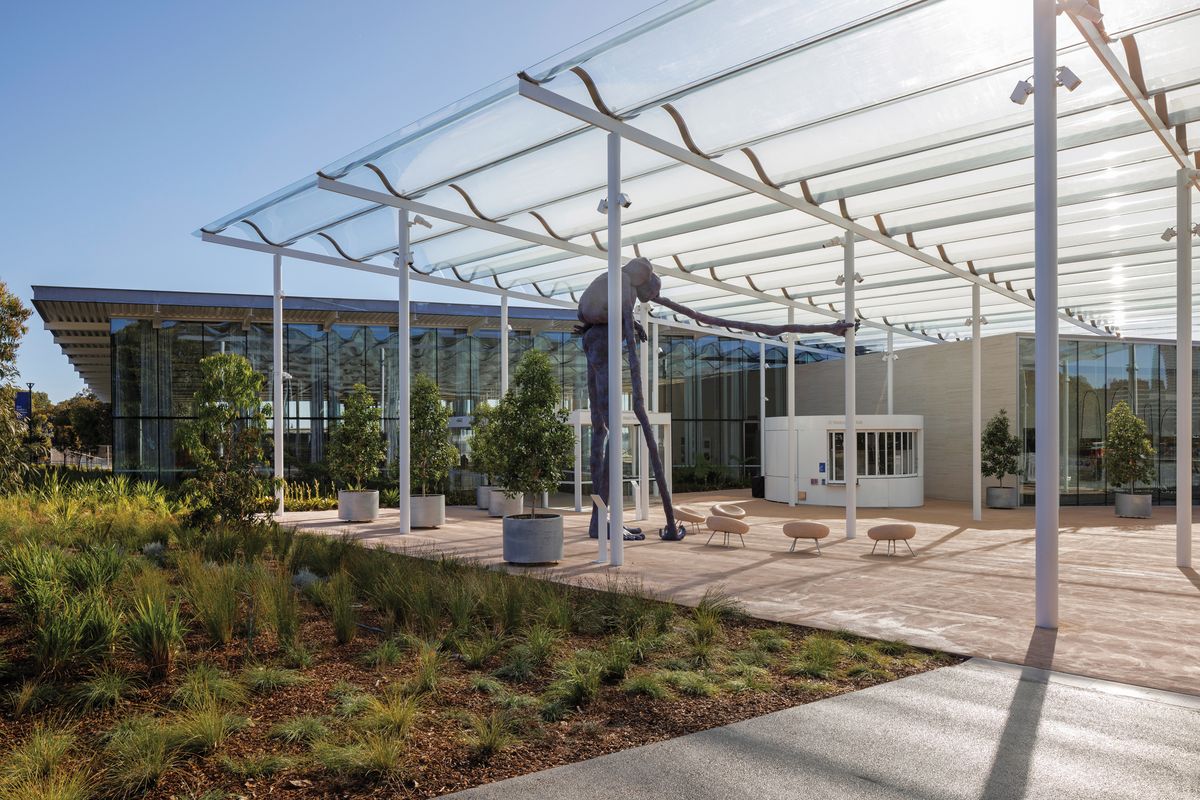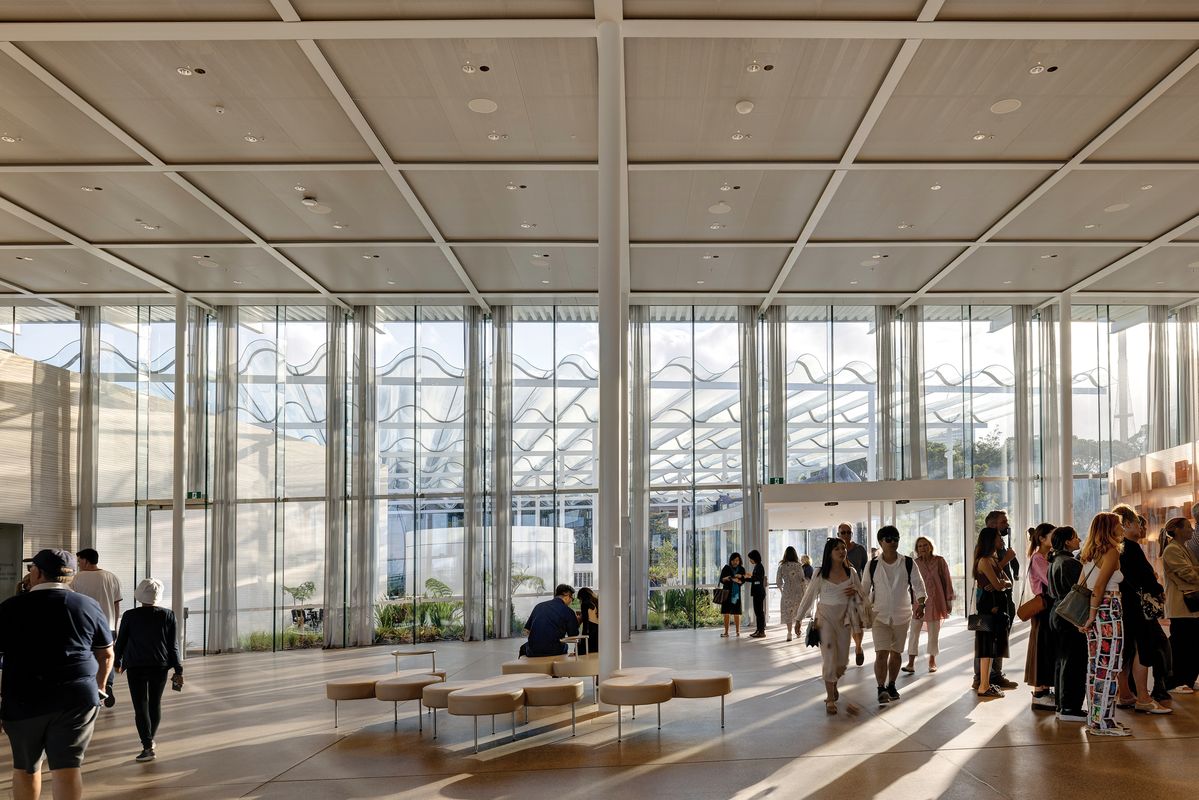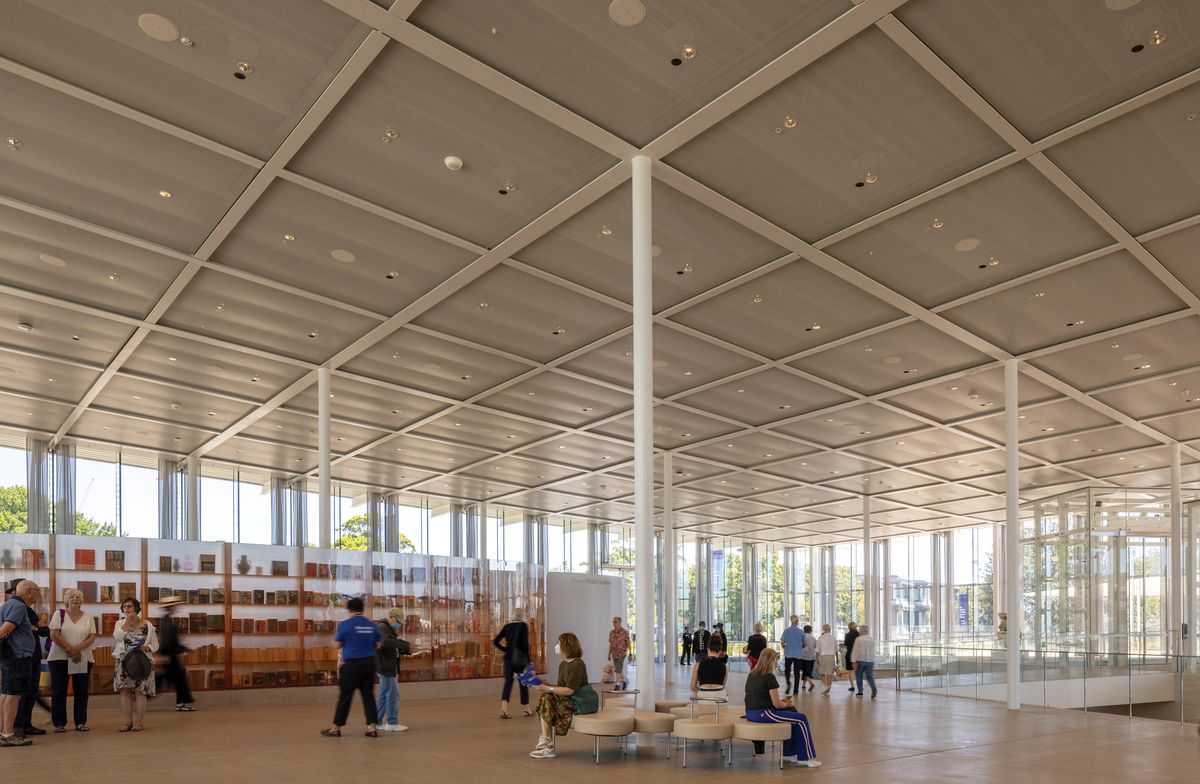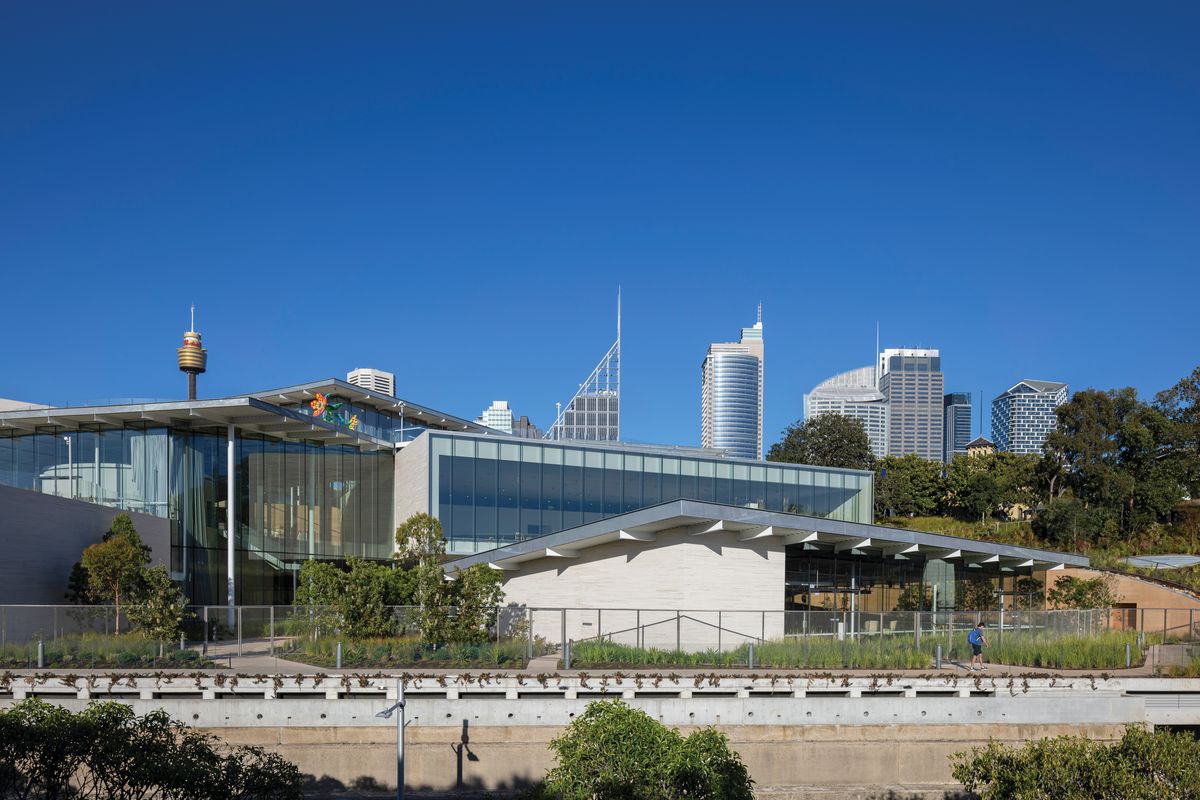Given the stature of SANAA, the significance of the Art Gallery of New South Wales in the nation’s cultural life, and the long wait for the institution’s much-needed expansion, the opening of Sydney Modern has drawn the attention of design and mainstream news media locally and abroad. Much of this coverage has been frothy and parochial. Readers of Dezeen differed, with some calling it confused and diluted, while others wondered whether SANAA’s vision had been compromised. 1 (This is not the case. In interviews, both SANAA and the architects in association, Architectus, said they believe that the design process, including value management interventions, led to a tighter and better outcome.) There are also longer, balanced, comprehensive assessments – Julian Worrall’s elegant review for The Guardian , for example. 2 In light of the redundancy of yet another fulsome account, I want to focus on four key moments of the building: the first, conceptual; the second, analogous; the third, found; and the fourth, operational.
So, first, the concept of overlapping, stacked boxes and terraces descending from the arrival pavilion. This compositional logic – very evident in the models and renders – is only legible from a hovering drone to the north and east. An image from this vantage point has led architectural coverage. From the ground, there is no view of the whole and no iconic silhouette. Road infrastructure, security fences, emergency exits and loading bays, as well as the old gallery next door, obscure views. SANAA has argued that its intent, given the tight site, was to design a “forest clearing” rather than something that could be seen in the round. That understood, the project is conceptually muddied and visually incoherent, especially from outside. The pavilions sport roofs variously curved, flat or planted. A 250-metre-long rammed-earth feature wall arcs through the composition, extending over two levels inside and outside of the building. Taking 18 months to construct, the wall is texturally rich, but at odds with SANAA’s signature steel grids and white surfaces. The entry roof comprises vaults of slumped glass on slender posts; it should be elegant but somewhat resembles an oversized suburban patio. The gap in coverage between it and the Susan Wakil Pavilion has necessitated a connecting glazed tunnel – a sort of grounded airbridge. The ticket box, relegated to a spot under the patio, is a mundane circular booth, whereas the book and gift shop, in the otherwise vast and empty entry pavilion, is an igloo of rose-tinted bio-resin. Delicate and visceral, and crafted by surfboard maker Hayden Cox, this installation is the best work to date of Kelvin Ho of Akin Atelier. But the sum of all these disparate parts is, sadly, not more.
In the entry pavilion, the book and gift shop inhabits an installation by Kelvin Ho of Akin Atelier, crafted from bio-resin by surfboard maker Hayden Cox.
Image: Brett Boardman
Reliance on robust visitor numbers to legitimate their ongoing funding has seen public galleries adopting spatial and visual strategies from retail and leisure centres, which are similarly concerned with the provision of spectacular experiences that enhance consumption and promote repeat visits. The intended outcome – restless wandering and a state of distracted curiosity – is quite a departure from the pedagogical ambitions of nineteenth-century cultural institutions. Which brings me to analogies. As we toured the building, an esteemed critic commented that its double-height atrium – with its broad concourse, multidirectional escalators, stairs and glass elevators – and its glazed balconies are an experience familiar to anyone who has been to a Westfield shopping centre. One of eight commissioned works of art, Lisa Reihana’s Groundloop (2022) is sited here, facing a descending escalator across the void, much like the video advertisements on monumental screens in shopping centres. It is impossible to give Groundloop the focused and sustained attention secured by Reihana’s acclaimed In Pursuit of Venus [Infected] (2015) through immersive wraparound presentation because the atrium, busy and bright, works against intense, transformative encounters with art. It will make an excellent venue for events and parties, a useful space for crowd-watching, and a choice backdrop for social media posts. No doubt, the curators will find ways to take advantage of, as well as to critique, the superficial consumption that characterizes the retail experience. This seems to be the case with Lorraine Connelly-Northey’s Narrbong-galang (many bags) (2022), shown in the loggia of the Yiribana Gallery, a space dedicated to Aboriginal and Torres Strait Islander art. Here, the loggia’s resemblance to a department-store shopfront is undercut by the salvaged rusted metals from which these giant “bags” are forged.
On the gallery’s lowest level, a decommissioned naval fuel tank has been transformed into a dramatic space for temporary exhibitions. Artwork: Adrián Villar Rojas.
Image: Brett Boardman
Third, if you’ve not seen “the Tank” in person, you’ve likely seen images of it, for it is the most dramatic and otherworldly space in Sydney Modern. Much higher and larger than the main white-box galleries above, the dark, subterranean Tank is so compelling that other exhibition spaces feel more characterless than they might otherwise do. It offers resistance and inspiration to curators and artists alike. A decommissioned naval fuel tank, it’s a potent reminder of the warmongering and resource extraction that have characterized twentieth-century capitalism, the environmental effects of which we are now struggling to overcome. Fittingly, artist Adrián Villar Rojas had the privilege of installing the first works. Known for his preoccupation with the disastrous consequences of the West’s colonial impulse to ethnographic collection and cultural conquest, Villar Rojas’s Mad Max-like assemblages of industrial fragments echo the Tank’s apocalyptic vibe. Part of an ongoing work titled The End of Imagination , this new iteration excoriates the past and offers a bleak vision of the future. Lit by sweeping spotlights, it’s a Gesamtkunstwerk . SANAA’s white spiralling stair drills down into the Tank, effective in its contrast. Future artists will likely also play with the possibilities of counterpoint.
That the windowless Tank has generated so much excitement runs counter to the emphasis on abundant panoramic views from the floors above. Which brings me to my fourth concern. The blurring of boundaries between inside and outside achieved by the dematerialization of enclosing walls has been a consistent motif for SANAA. It’s an idea that has resonated in the art world since Yves Klein proposed his “air architecture” in the late 1950s. The extent of glazing for this location and function, however, has been a challenge for those charged with making the building comfortable and sustainable. The planning strategy isolates the main galleries as insulated, windowless boxes and has a looseness that permitted tweaking of orientation and roof overhangs. But equally, it yields a deep plan, an extended perimeter, and the folly of an atrium 11 metres high that flows seamlessly into the entry pavilion and the lower concourse. It fell to consultants Arup and Atelier Ten to retrospectively do what they could: reducing glare and minimizing heat gain with high-performance glass, blinds and curtains; optimizing rainwater harvesting; sourcing responsible and forest-certified timber; and working toward the leanest structure possible to bridge the Eastern Distributor motorway running below.
The compositional logic of the new building, which comprises a series of overlapping, stacked boxes and terraces, is legible from the air rather than the ground. Artwork: Yayoi Kusama.
Image: Brett Boardman
Atelier Ten addressed management processes and material specifications and deployed the full panoply of technical wizardry. Galleries and museums typically draw heavily on mechanical means to achieve thermal stability, so it is impressive that the project achieved a 6-star Green Star rating prior to opening. But it’s worth revisiting how one reaches the stars. Some stars, such as access by public transport and avoiding the destruction of ecologies, were low-hanging. The building’s touted 100 percent green energy status is accomplished primarily through a 10-year contract with Shell Energy to supply renewable electricity. Leaving roofs free for planting may well be better here than solar arrays, but I’m not confident that sustainability is an overarching objective of this design. Indeed, I’d argue that the “nature” claimed to be at the heart of SANAA’s practice is more a picturesque ideal than an ecological stance. Views of gardens through clean glass are “in,” while other aspects of the natural world – mould, weathering, birds, and the spores that will inevitably explode from the many tree ferns around the building – are very much “out.” Kazuyo Sejima, who founded SANAA with Ryue Nishizawa in 1995, defends the building’s sustainability credentials by explaining that it is made of lightweight steel, the rammed-earth wall uses local sand, and the terraced floors follow the contours of the site, mitigating against the need for extensive earthworks. The builder, Richard Crookes Constructions, tells a different story. According to them, structural completion involved the excavation of 80,000 tonnes of material, and the installation of more than 1,400 tonnes of structural steel and 12,000 cubic metres of concrete. 3 (And this was before the installation of limestone cladding from Portugal.) Granted, a 30 percent reduction in Portland cement was achieved across concrete mixes, but it is still a great deal of concrete (the equivalent of five Olympic swimming pools, whereas the concrete saved by reusing the Tank is one-third of one pool).
Sydney Modern has not been subject to the intense questioning received by Herzog and de Meuron’s “climate-killer” Museum of the 20 th Century in Berlin, nor has its art yet been targeted by environmental activists. Nevertheless, as climate chaos intensifies over the life of the building, some of its architectural conceits will, I fear, seem vain and operationally costly. The decade that has passed since the project’s conception has already rendered its “modernist” architectural dress, its commitment to compete as a global tourist destination and its avowed populism anachronistic. This is not to imply that the artwork on the front terrace, Flowers that Bloom in the Cosmos by 92-year-old Yayoi Kusama, is no longer of value. Rather, it is to suggest that the grim sculptures of Villar Rojas, 50 years Kusama’s junior, are more representative of the concerns of today’s mid-career artists and speak directly to an anxious public. Art – and the architecture that allows us to experience it directly and collectively – has more urgent tasks than to entertain and flatter. Sydney Modern’s architectural refinements elevate it above the quasi-public buildings where we go about our day-to-day existence. But, just as fine fabric and expert tailoring do not make a business suit into an evening frock, its architecture fails to transcend the limitations of our times and take us to another place.
1. See reader comments on Christina Yao, “SANAA designs Sydney Modern to be ‘harmonious with its surroundings’,” Dezeen , 29 November 2022, dezeen.com/2022/11/29/sydney-modern-art-gallery-sanaa (accessed 3 February 2022).
2. Julian Worrall, “Move over Sydney Opera House – there’s a new superstar in town,” The Guardian , 29 November 2022, theguardian.com/artanddesign/2022/nov/28/move-over-sydney-opera-house-theres- a-new-superstar-in-town (accessed 7 December 2022).
3. Richard Crookes Constructions, “Sydney Modern Structure Complete,” 8 December 2021, richardcrookes.com.au/sydney-modern-structure-complete (accessed 8 December 2022).
Credits
- Project
- Sydney Modern Project by SANAA
- Executive Architect
- Architectus
Australia
- Project Team
- Kazuyo Sejima, Ryue Nishizawa, Yumiko Yamada, Asano Yagi, Soo Kim, Hiraoki Katagiri, Takayuki Hasegawa, Riccardo Cannata, Enrico Armellin, Misha Mikhail Nemkov, Ichio Matsuzawa, Hana Greer
- Consultants
-
Environmental consultant
Atelier Ten
Facade Surface Design
Hydraulic and fire engineer Arup
Landscape architect GGN, McGregor Coxall, Richard Crookes Constructions
Lighting Arup
Mechanical and electrical engineer Steensen Varming
Project management Infrastructure NSW
Security consultant Arup
Shop design Akin Atelier
Signage SO
Structural engineer Arup
Vertical transport consultant Steensen Varming
- Aboriginal Nation
- Built on the land of the Gadigal people of the Eora nation
- Site Details
- Project Details
-
Status
Built
Category Public / cultural
Type Culture / arts
Source
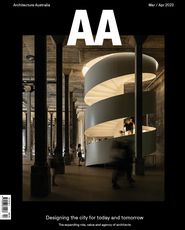
Project
Published online: 30 Mar 2023
Words:
Sandra Kaji-O'Grady
Images:
Brett Boardman
Issue
Architecture Australia, March 2023

